When publishing changes, so does society. Investigate and compare the impact of two publication technologies, one pre-1900 and one post-1962, on a specific aspect of society (e.g. education, politics, creative industries, science, entertainment, social relationships).
The publishing technologies that I chose to compare were printed books versus electronic books (available on various eReaders). Newton’s Third Law of Motion is relevant to this topic because “for every action there is an equal and opposite reaction”. It seems as though for every upside to traditional publishing and printed books, there is a downside to ePublishing and eBooks. It also works the other way around - for every eBook pro there is strike against printed books.
Although society often focuses on the shortcomings of each medium, we need to stop treating these two resources as opposing forces, as each serves unique purposes. These publishing platforms can work together and make up for each others deficiencies to provide timely, relevant and authentic information for use in educational settings.
In my Flickr photo collection, I have juxtaposed printed books and eBooks to show how one’s weakness is the other’s strength. My goal in this collection is to show how each medium balances the other (… the yin and yang of publishing!). Here is how each format reigns supreme in various categories of importance to readers in educational settings:
The publishing technologies that I chose to compare were printed books versus electronic books (available on various eReaders). Newton’s Third Law of Motion is relevant to this topic because “for every action there is an equal and opposite reaction”. It seems as though for every upside to traditional publishing and printed books, there is a downside to ePublishing and eBooks. It also works the other way around - for every eBook pro there is strike against printed books.
Although society often focuses on the shortcomings of each medium, we need to stop treating these two resources as opposing forces, as each serves unique purposes. These publishing platforms can work together and make up for each others deficiencies to provide timely, relevant and authentic information for use in educational settings.
In my Flickr photo collection, I have juxtaposed printed books and eBooks to show how one’s weakness is the other’s strength. My goal in this collection is to show how each medium balances the other (… the yin and yang of publishing!). Here is how each format reigns supreme in various categories of importance to readers in educational settings:
Book
|
eBook
| |
Authenticity
|
✯
| |
Longevity
|
✯
| |
Readability
|
✯
| |
Simplicity
|
✯
| |
Reliance
|
✯
| |
Searchability
|
✯
| |
Portability
|
✯
| |
User Experience
|
✯
| |
Accessibility
|
✯
| |
Currency
|
✯
|
Please click here to see my set of 20 images on Flickr that capture the reasons why these two publishing platforms work so well together in the realm of education.
AUTHENTICITY
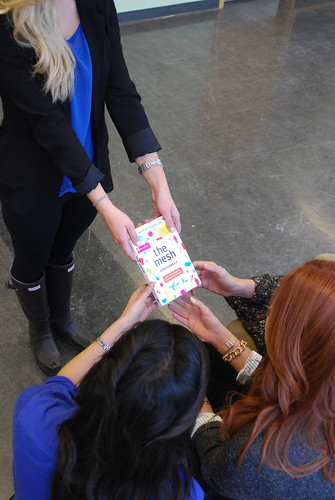
Book (Pro) - The physical book wins out over eBooks when it comes to authenticity. Printed books are generally seen as more credible because of the traditional publishing process (one-to-many model). This process ensures that the written work is vetted by many individuals (including literary agents, editors and retailers, among others). This helps “weed out’” inaccurate and low-quality work for use in educational settings.

eBook (Con) - eBooks can’t compare to physical books when it comes to authenticity. eBooks are simple to create and the process is becoming more streamlined all the time. Because of the ease of creation, anyone with a computer and an Internet connection can publish an eBook (many-to-many publishing model). When everyone is a publisher, who is responsible for filtering out the noise? Teachers? Students? This is still a grey area.
LONGEVITY
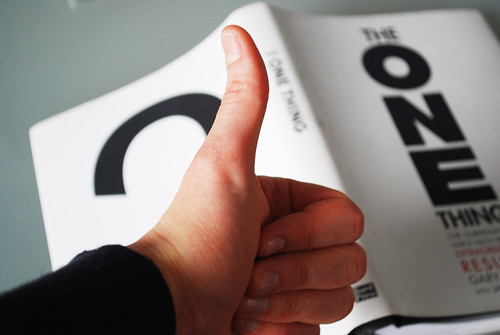
Book (Pro) - The physical book wins out over eBooks when it comes to longevity. Printed works can last hundreds of years if properly preserved and even many decades if improperly preserved. Printed books can be used in the classroom and they will continue to exist in their physical form, with the exception that they are physically destroyed. You can spill a drink on them, remove parts and roll them up without doing damage to the overall product. When was the last time you said the same thing about an eReader?
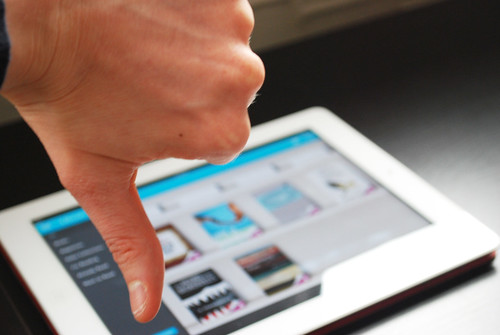
eBook (Con) - eBooks can’t compare to physical books when it comes to longevity. Sure, there is little fear that “ripping out pages” will damage a file, however one or two wrong clicks will result in a losing the entire work. The high cost of digital textbooks, paired with this sense of impermanence leaves consumers feeling uneasy about buying expensive ePublications. Additionally, purchasing eBooks are commonly thought of as “renting” not “buying” because files reside on server. This lack of control has some readers running for the hills!
READABILITY

Book (Pro) - The physical book wins out over eBooks when it comes to readability. Ink on paper provides high contrast and makes it easy to read the printed page. Off-white and cream-coloured stocks are typically preferred by long document publishers because they are easy on the eyes.

eBook (Con) - eBooks can’t compare to physical books when it comes to readability. Screen fatigue makes reading pixels on a screen tiring on the eyes. Many eReaders use e-ink technology to mimic ink on paper, but the simulation is never as good as the real thing.
SIMPLICITY

Book (Pro) - The physical book wins out over eBooks when it comes to simplicity. Books are intuitive to use and navigate - simply open up a book and begin reading. There are no wires or cords or electrical plugs to worry about. Ink on paper is as simple as it gets.
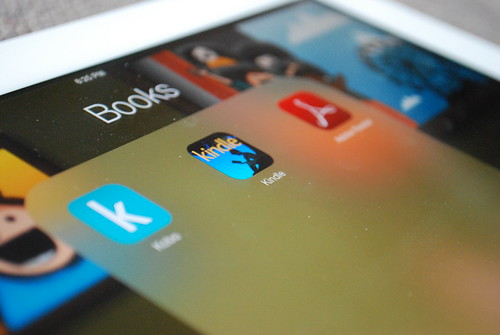
eBook (Con) - eBooks can’t compare to physical books when it comes to simplicity. File type confusion and incompatibility (.epub as the standard format vs. the .mobi Amazon Kindle-specific format) can make buying, downloading and reading a book challenging. The un-tech savvy reader may have difficulty understanding which format is needed for which device and it just isn’t the same as picking up a printed book.
RELIANCE
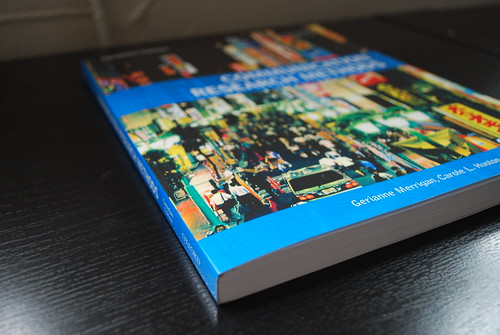
Book (Pro) - The physical book wins out over eBooks when it comes to reliance. Books are stand-alone products that don’t need additional tools. Printed books do not rely on external power sources or high-tech gadgetry to be consumed. An eReader with low battery isn’t very useful during a power outage.
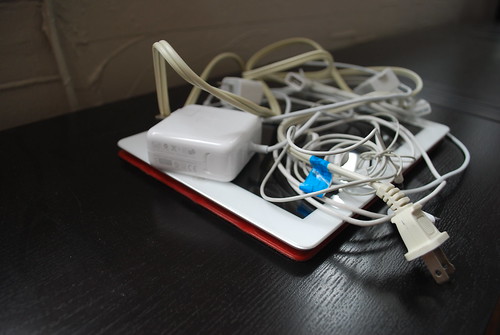
eBook (Con) - eBooks can’t compare to physical books when it comes to reliance. eReaders require external power for recharging, as well as software support post-purchase. Because of this reliance on external power, eReaders are of little use in remote areas or situations where there is limited access to power (ex: studying for an exam on a transatlantic flight).
SEARCHABILITY
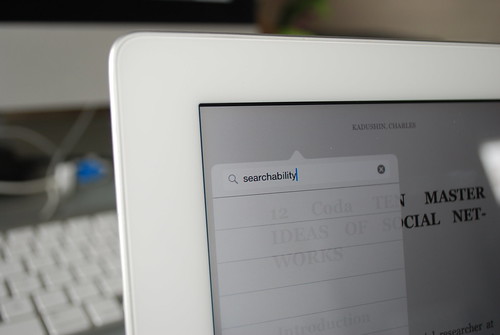
eBook (Pro) - eBooks win out over physical books when it comes to searchability. There is a search function within every eReading platform, which enables users to quickly and easily search for keywords throughout the document. Furthermore, hyperlinking increases the reach of standard search functionality by directing users to further information on the World Wide Web.
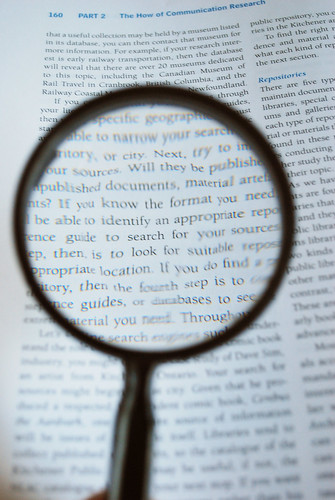
Book (Con) - Physical books can’t compare to eBooks when it comes to searchability. It takes time to find a specific passage or topic in a book, as the reader must look up keywords in the index or flip through book to find what they are looking for. The static nature of books makes them inherently difficult to search, which can be incredibly frustrating, especially for a student conducting research.
PORTABILITY
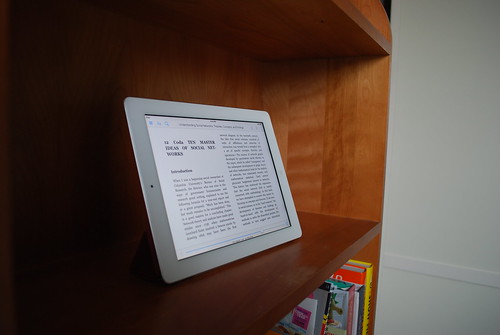
eBook (Pro) - eBooks win out over physical books when it comes to portability. Students can carry a library’s worth of books on a very small device, which can be incredibly helpful for students who travel often. Whether commuting a short distance to school or travelling much further, eReaders are compact, lightweight and inherently portable.
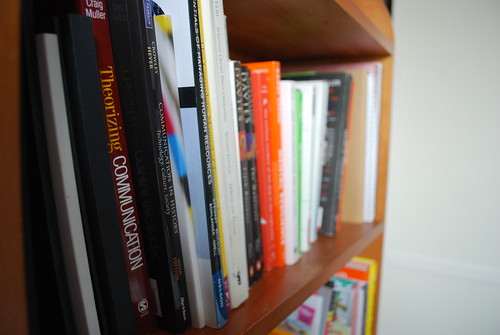
Book (Con) - Physical books can’t compare to eBooks when it comes to portability. It is logistically difficult to move multiple textbooks around. Paper is heavy and it is not easily transportable across campus or across the country. Multiple bags may be necessary to lug required books from one place to another (not to mention overweight baggage fees at the airport!).
USER EXPERIENCE
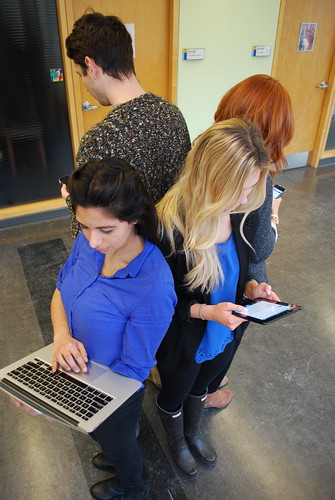
eBook (Pro) - eBooks win out over physical books when it comes to user experience. Online collaboration tools built into eReading devices connect one solitary reader to another directly on the reading platform. This facilitation of connecting like-minded readers with one another fosters a community of learners who don’t feel like they are tackling the material alone (even if they are at different schools in different cities or even different parts of the world). Furthermore, social networking capabilities within eReading platforms (ex: Kobo’s Reading Life) promote conversation and lifelong learning within an online community.

Book (Con) - Physical books can’t compare to eBooks when it comes to user experience. Reading a book is a solitary experience and only one person can read a single book (comfortably) at one time. Students may feel a sense of isolation in the material they are studying because it is near to impossible to interact with other users through the platform of a physical book.
ACCESSIBILITY

eBook (Pro) - eBooks win out over physical books when it comes to accessibility. Readers can choose their preferred typeface, font size and colour contrast level to suit their accessibility needs. Furthermore, audiobooks and read-aloud capabilities are more commonly available within the newer .epub files.
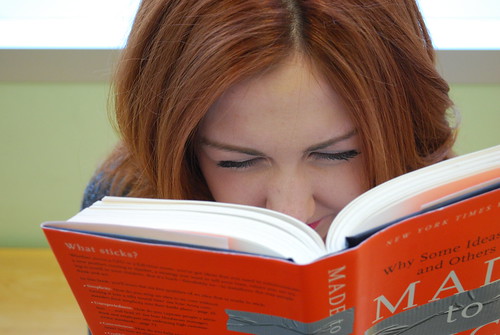
Book (Con) - Physical books can’t compare to eBooks when it comes to accessibility. Small type, as well as low contrast or faded text can make a book difficult to read for someone with even a minor visual impairment. Although large-print options do exist, they are seldom available for textbooks.
CURRENCY
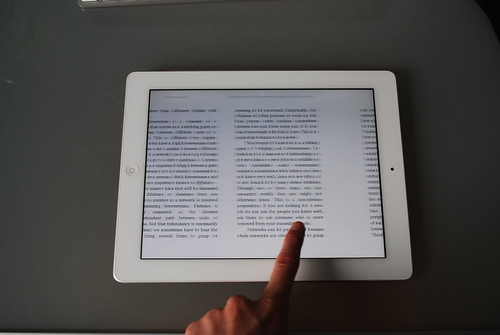
eBook (Pro) - eBooks win out over physical books when it comes to currency. The nature of ePublications makes it so that there is a much faster time to market, as publishers do not have to wait for the books to be manufactured and distributed (which can take weeks). Furthermore, the ability to update an .epub file is much simpler and therefore has a faster time to market than traditional ink on paper products.

Book (Con) - Physical books can’t compare to eBooks when it comes to currency. Time to market is much slower in a traditional publishing process; therefore the reader is not always reading the most current information. Updated editions of printed books do become available, but they are typically updated every few years. This can be especially critical for hi-tech fields, where the rate of technological change makes buying a textbook impractical when the information may change in a few months.


